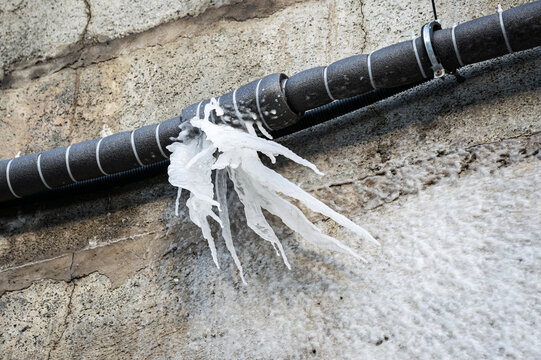Preventing Frozen Plumbing in Winter: Critical Strategies
Preventing Frozen Plumbing in Winter: Critical Strategies
Blog Article
The publisher is making a few great points relating to How to Prevent Your Pipes From Freezing overall in this post directly below.

Winter can damage your pipes, specifically by freezing pipelines. Right here's just how to stop it from happening and what to do if it does.
Intro
As temperature levels decline, the danger of frozen pipes rises, potentially leading to costly repair work and water damage. Understanding how to prevent frozen pipelines is crucial for home owners in chilly climates.
Recognizing Frozen Pipes
What causes pipelines to ice up?
Pipelines ice up when revealed to temperature levels listed below 32 ° F (0 ° C) for expanded durations. As water inside the pipelines ices up, it increases, taxing the pipe wall surfaces and possibly causing them to break.
Risks and damages
Icy pipelines can bring about water system disturbances, residential property damages, and pricey fixings. Ruptured pipelines can flooding homes and trigger comprehensive structural damages.
Signs of Frozen Pipeline
Identifying icy pipelines early can avoid them from rupturing.
How to identify icy pipelines
Search for reduced water flow from faucets, unusual odors or noises from pipelines, and noticeable frost on subjected pipes.
Avoidance Tips
Shielding prone pipelines
Wrap pipes in insulation sleeves or use warmth tape to safeguard them from freezing temperatures. Concentrate on pipes in unheated or external areas of the home.
Heating methods
Keep interior spaces appropriately warmed, specifically locations with plumbing. Open cabinet doors to permit cozy air to circulate around pipes under sinks.
Shielding Outside Pipes
Yard tubes and outdoor faucets
Detach and drain pipes garden hose pipes before winter season. Set up frost-proof faucets or cover outside taps with protected caps.
What to Do If Your Pipes Freeze
Immediate actions to take
If you suspect icy pipes, keep taps available to soothe stress as the ice melts. Use a hairdryer or towels soaked in warm water to thaw pipelines slowly.
Long-Term Solutions
Structural changes
Take into consideration rerouting pipes far from exterior wall surfaces or unheated areas. Include extra insulation to attic rooms, basements, and crawl spaces.
Updating insulation
Invest in top quality insulation for pipelines, attic rooms, and walls. Correct insulation assists preserve regular temperature levels and reduces the risk of frozen pipelines.
Final thought
Avoiding frozen pipelines needs aggressive procedures and fast feedbacks. By comprehending the reasons, signs, and preventive measures, home owners can secure their plumbing throughout cold weather.
5 Ways to Prevent Frozen Pipes
Drain Outdoor Faucets and Disconnect Hoses
First, close the shut-off valve that controls the flow of water in the pipe to your outdoor faucet. Then, head outside to disconnect and drain your hose and open the outdoor faucet to allow the water to completely drain out of the line. Turn off the faucet when done. Finally, head back to the shut-off valve and drain the remaining water inside the pipe into a bucket or container. Additionally, if you have a home irrigation system, you should consider hiring an expert to clear the system of water each year.
Insulate Pipes
One of the best and most cost-effective methods for preventing frozen water pipes is to wrap your pipes with insulation. This is especially important for areas in your home that aren’t exposed to heat, such as an attic. We suggest using foam sleeves, which can typically be found at your local hardware store.
Keep Heat Running at 65
Your pipes are located inside your walls, and the temperature there is much colder than the rest of the house. To prevent your pipes from freezing, The Insurance Information Institute suggests that you keep your home heated to at least 65 degrees, even when traveling. You may want to invest in smart devices that can keep an eye on the temperature in your home while you’re away.
Leave Water Dripping
Moving water — even a small trickle — can prevent ice from forming inside your pipes. When freezing temps are imminent, start a drip of water from all faucets that serve exposed pipes. Leaving a few faucets running will also help relieve pressure inside the pipes and help prevent a rupture if the water inside freezes.
Open Cupboard Doors
Warm your kitchen and bathroom pipes by opening cupboards and vanities. You should also leave your interior doors ajar to help warm air circulate evenly throughout your home.

We are very eager about How To Avoid Freezing Pipes and I'm hoping you enjoyed our page. Loved our piece? Please share it. Help somebody else discover it. Thank you for your time. Don't hesitate to pay a visit to our site back soon.
Booking Report this page